Part 1 looked at the origin and results of the Nautilus program; Part 2 looks at the broader issues and lessons.
Leadership across multiple disciplines
Until the atomic sub, all subs were basically watertight surface ships designed to submerge and stay underwater for brief periods. No navy had never produced a sub hull designed and built primarily for prolonged submerged operations
Since this was not just going to be a free-standing, land-based reactor but the power plant of a sea-going vessel, he made built the design team as a combination of generalists and specialists. He started with experienced sub designers and added engineers who knew nothing about subs but did know just about all of what little was known about nuclear power and fission, then enhanced the teams with materials scientists, industrial chemists, theoretical and applied physicists, and other experts.
Rickover drove numerous program issues, all while working through, around, or behind the official shipbuilding establishment:
- First, the basic atomic-reactor technology had to be decided on, then perfected and built, while key obstacles such as required materials were identified. Very little was known about sustainable, power-generating reactor design at the time, including what materials were suitable. For example, when cadmium-plated fuel rods proved to be inadequate, hafnium was the next choice – but there were no commercial sources of hafnium; there was also a need for 20,000 pounds of zirconium, for which there was a small industrial source.
Rickover’s team had to develop entirely new processes to extract and refine these elements in large quantity. There were similar stories for the highly specialized piping and pumps, and the hundreds of tons of specialty steels the sub would need. Rickover’s personal calls and even outright haranguing of many CEOs to get the R&D effort or materials he needed are fully documented.
- Second was the development of new technologies and sub designs while managing “mission creep.” Nuclear power freed the sub from the need to surface, which then mandated advanced desalinization systems to provide fresh water, and electrolysis and scrubber systems to provide fresh air to the crew. Since the sub would be underwater for long periods and not be able to take corrective navigation sightings, the existing standard compass and gyrocompass were inadequate; accurate inertial navigation units were needed, along with more precise sonar to measure distance to ocean floor and to the ice-sheet above (since nuclear subs would go under the ice near the North Pole).
At the same time, the freedom and relatively “blank sheet of paper” which the nuclear sub offered often tempted designers to add features that were never feasible in conventional subs. Since it did not need to hold huge banks of batteries or diesel fuel tanks, the entire internal layout could be re-thought, and the hull design could be optimized for submerged operation, rather than for the primarily surface-cruising design of diesel subs (Figure 1).
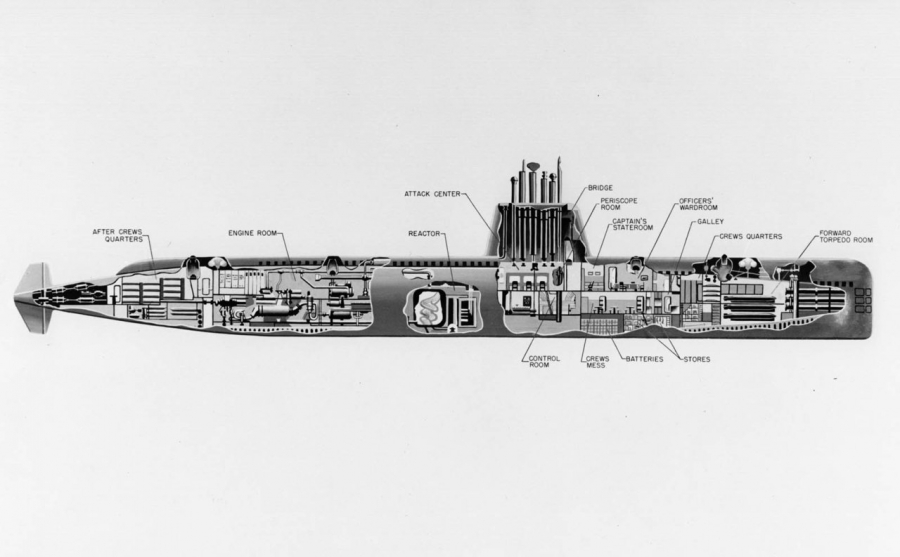
Yet Rickover was adamant that the number of new, untested technologies be kept to an absolute minimum since each one added installation and maintenance headaches. He insisted on keeping all system as simple and few as possible as long as they met the project requirements, since complexity added risk, delayed schedules, degraded reliability, and added to repair difficulty – which all had to be minimized in a sub, especially one that might be under attack in battle. Among his extensive memos, he noted: “it has been the experience of industry that to compound one experiment on another precludes the ability to forecast results successfully, and renders meaningless any concrete schedule.”
- Third was crew selection and training for a program that had no precedent, as the traditional engine-room parameters and operating rules were irrelevant. The crew members had to be technically competent, of course, but also able to live and work in tight quarters, with no sight of daylight or land for weeks at a time.
There were issues of how and on what to train the crew , what contingencies and emergencies needed to be in the training process, and anticipating what might go wrong – all when no one had ever done anything like this before; there was no such thing as a knowledgeable teacher or basic manual to guide the crew or the trainers. Rickover’s solution involved multiple tactics: bring in the few nuclear-power academics, scientists, and engineers; have MIT set up a master’s program in nuclear science and get all officers and sub designers to go through it; use experienced submariners to define and then vet any possible operational scenarios and responses; and use less-experienced submariners to participate in extensive simulation scenarios.
- Finally, there were issues of managing reliability and risks. Despite all the unknowns, unproven technologies, and inherent risks, the absolute rule was to anticipate everything and ignore nothing, to ensure the design and operational perfection. Rickover set up a flat organization with minimal bureaucracy using personally trained staff committed to the project – easier said than done. He demanded that any potential or observed problem, be reported, analyzed, and resolved to the team’s (and his) satisfaction, no matter how small or insignificant, with no exceptions.
Every design concept and implementation was subject to severe design reviews, and every part was tested and re-tested to all imaginable circumstances. For example, these tests were done with the reactor and its control rods at severe angles (a sub can roll up to 45⁰, and dive or surface at 30⁰ to 40⁰ angles); all reactor-related components (pumps, fittings, piping runs) were also tested for operation in a radioactive environment, as well as for performance despite the shock impact of depth charges.
Schedule met, goals exceeded
Given all the unknowns and uncertainties, this project could easily have taken a decade or more, yet its timeline was remarkably short. The nuclear submarine program was formally authorized in 1950, after just a few years of preliminary work. The Nautilus’ keel was laid in 1952, and despite the technical challenges (plus complicated Navy, Defense Department, and Congressional politics), it launched on schedule just two years later, becoming fully operational immediately with only minor issues (Figure 2). From initial concept to launch took just five years, truly astonishing given all the issues to work through and new technologies to be employed.
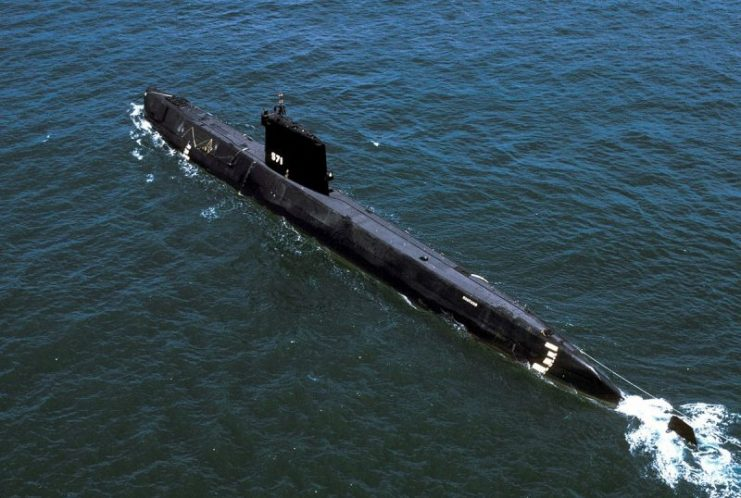
While a WWII diesel-electric sub was about 300 feet long and about 22 feet wide, could make about 20 knots on the surface and perhaps up to half that for fairly short bursts when submerged, and stay submerged for a few hours at most, the Nautilus was 317 feet long with a wider 27-foot beam, could do 22 knots on the surface and cruise at over 20 knots for long periods underwater.
The dramatic success and demonstrated capability of this nuclear-power submarine led to a fleet of dozens of these attack submarines as well as ballistic-missile subs, then to much-larger subs which stay on patrol for up to six months without surfacing, and even to surface ships such as aircraft carriers powered by eight independent reactors and which only need annual refueling (in contrast, a conventional carrier needs to be refueled approximately every week).
Rear Admiral Rickover received Presidential and Congressional awards acknowledging his role as “the father of the nuclear submarine.” In this case, it is not just excessive hype and zeal, but the real thing. The Nautilus was retired in 1980, and you can see and tour this unique vessel at the Submarine Force Museum in Groton, Connecticut, to get a true sense of the unique design and production challenges.
Nautilus lessons and the Apollo program
Among the project-management lessons which carried over to Apollo were these:
- Assume nothing, and test every component and subsystem to the maximum under every expected and unexpected scenario, and document everything.
- do the “all-up” system testing, rather than the more-obvious incremental “build, test, add-on, test, add-on, test” cycle (as discussed above)
- use a test-bed prototype which exactly matches the final design in form, features, and layout; adding special test points, valves, access hatches and other “nice to have” features for testability and means the test-bed prototype will function differently from the final unit in terms of access, thermal issues, performance, and other subtle factors. Thus, the final design becomes a new project compared to the test-bed prototype. It’s analogous to adding test points and buffers to an RF design — their presence changes the performance in good, bad, and inexplicable ways.
- Unlike building batches of tens or more units in a pilot run for test and evaluation, projects such as these only build one or two units at a time. Therefore, there’s no statistical insight to be gained about the likelihood of failure from tests on a single unit.
- crew training for a mission which has never been done requires extensive use of hardware-in-the-loop simulation and running through every possible routine, abnormal, and extreme scenario.
The importance and impact of bringing nuclear power to submarines and to the surface fleet cannot be minimized; it radically transformed both. Fortunately, it’s a fully documented event, and there are many excellent references to Rickover, the Nautilus program, the nuclear Navy, and more.
References:
- Theodore Rockwell, “The Rickover Effect: How One Man Made a Difference“, Naval Institute Press, 1992.
- Francis Duncan, “Rickover: The Struggle for Excellence,” Naval Institute Press, 2011.
- Francis Duncan, “Rickover and the Nuclear Navy: The Discipline of Technology,” Naval Institute Press, 1989.
- USN (Ret.) Rear Admiral Dave Oliver, “Against the Tide: Rickover’s Leadership Principles and the Rise of the Nuclear Navy,” Naval Institute Press, 2014.
- Carl Blair, Jr., “The Atomic Submarine and Admiral Rickover,” Henry Holt and Company, 1954.
- (Edited by Paul C. Cantonwine) H.G. Rickover, “The Never-Ending Challenge of Engineering: Admiral H.G. Rickover in His Own Words, ” American Nuclear Society, 2013.
- Norman Polmar and Thomas B. Allen, “Rickover: Controversy and Genius: A Biography,” Simon & Shuster, 1982
- On Jewish Matters, “The Father of the Nuclear Navy – Admiral Hyman George Rickover”.
- Rickover: The Birth of Nuclear Power” (PBS documentary)
- The National Museum of American History (Smithsonian Museum), “The Submarine Revolution”.
- University of Pennsylvania, “Spherical Pressure Vessels”.
- Charles Murray and Catherine Bly Cox, “Apollo : The Race to the Moon,” Simon & Schuster, 1989; see Chapter 4.

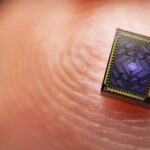
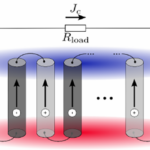

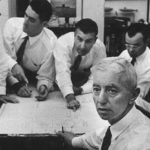
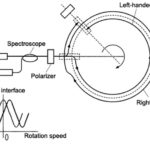

Leave a Reply
You must be logged in to post a comment.